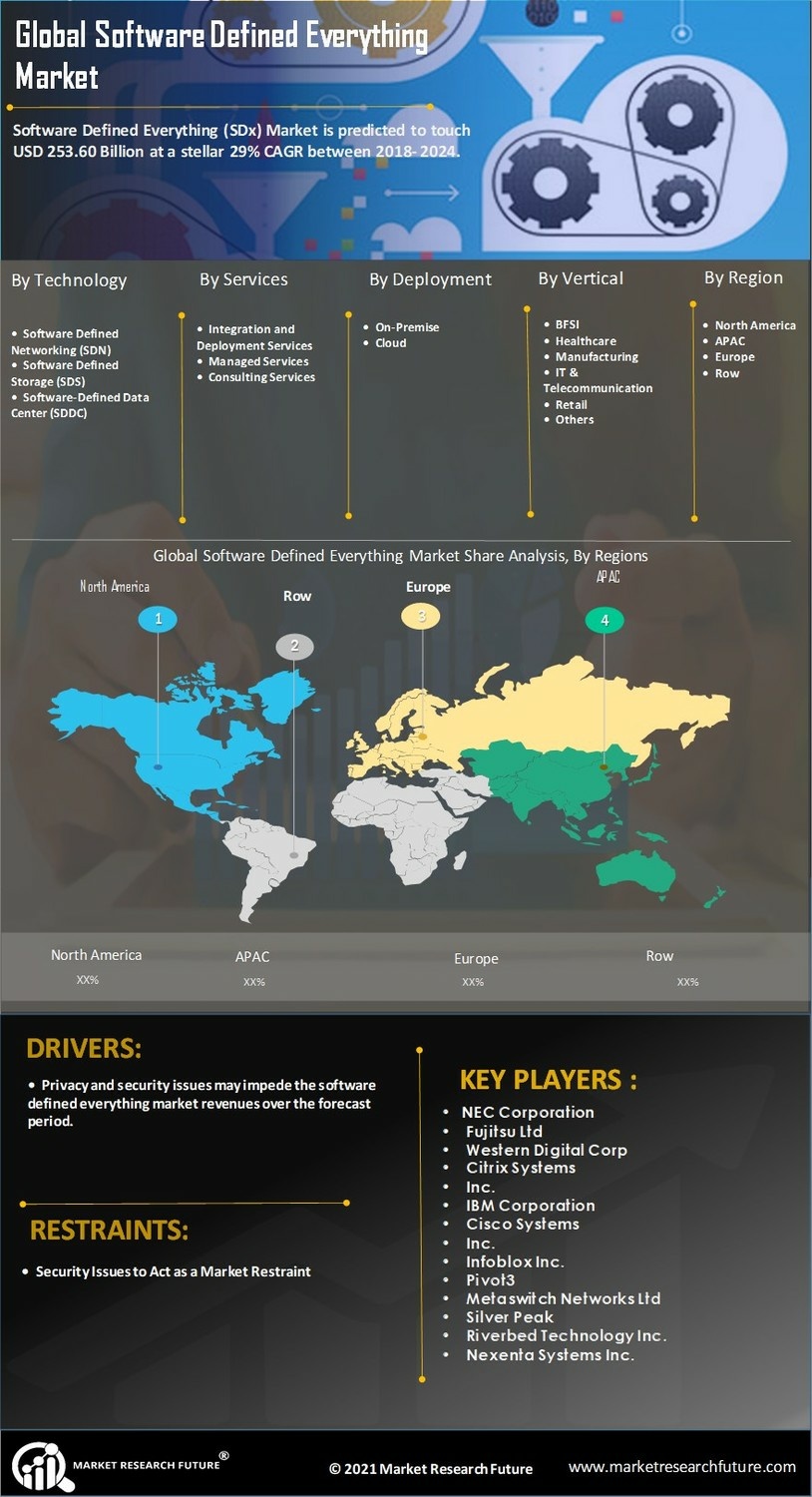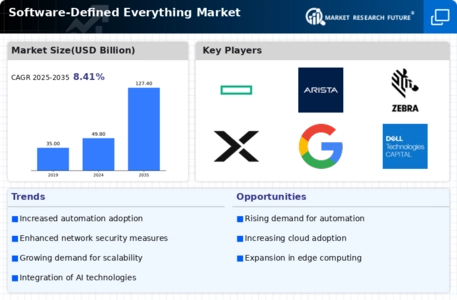Emphasis on Cost Efficiency
Cost efficiency remains a pivotal factor influencing the Software-Defined Everything Market. Organizations are increasingly seeking ways to reduce operational expenses while maintaining high levels of service quality. Software-defined solutions provide a pathway to achieve this by enabling more efficient resource utilization and minimizing hardware dependencies. Recent studies indicate that companies adopting software-defined technologies can realize cost savings of up to 40% in their IT budgets. This financial incentive is driving the adoption of software-defined models across various sectors, as businesses strive to allocate resources more effectively. Furthermore, the potential for reduced maintenance costs and improved energy efficiency further enhances the appeal of software-defined solutions, positioning the Software-Defined Everything Market as a viable option for organizations aiming to optimize their financial performance.
Growing Need for Scalability
Scalability has emerged as a critical driver within the Software-Defined Everything Market. As organizations expand, their IT infrastructure must adapt to increasing demands without compromising performance. Software-defined solutions offer the flexibility to scale resources up or down based on real-time requirements. This adaptability is particularly vital for businesses operating in dynamic environments, where fluctuations in workload can occur frequently. Market analysis indicates that the scalability aspect of software-defined technologies is expected to contribute significantly to the industry's growth, with estimates suggesting a potential increase in market size by 30% over the next five years. The ability to seamlessly integrate additional resources allows companies to optimize their operations, thereby enhancing overall productivity and responsiveness to market changes.
Rising Demand for Automation
The Software-Defined Everything Market is experiencing a notable surge in demand for automation across various sectors. Organizations are increasingly recognizing the potential of software-defined solutions to streamline operations, reduce human error, and enhance efficiency. According to recent data, the automation market is projected to grow at a compound annual growth rate of over 25% in the coming years. This trend is driven by the need for businesses to remain competitive and agile in a rapidly evolving technological landscape. As automation becomes more prevalent, the Software-Defined Everything Market is likely to expand, offering innovative solutions that cater to diverse operational needs. The integration of automation technologies into software-defined frameworks may also lead to improved resource management and cost savings, further solidifying the industry's position in the market.
Integration of Edge Computing
The integration of edge computing is emerging as a transformative driver within the Software-Defined Everything Market. As the demand for real-time data processing and low-latency applications increases, edge computing solutions are becoming essential. By processing data closer to the source, organizations can enhance performance and reduce bandwidth costs. Market projections suggest that the edge computing segment is expected to grow at a staggering rate of over 30% in the next few years. This growth is indicative of the industry's shift towards decentralized computing models, which align with the principles of software-defined architectures. The Software-Defined Everything Market stands to gain significantly from this trend, as businesses seek to implement edge solutions that complement their existing software-defined frameworks, ultimately leading to improved operational efficiency and innovation.
Advancements in Network Virtualization
The Software-Defined Everything Market is significantly influenced by advancements in network virtualization technologies. As organizations increasingly rely on complex network infrastructures, the need for efficient management and optimization becomes paramount. Network virtualization allows for the abstraction of physical network resources, enabling more agile and flexible network configurations. This trend is reflected in the growing adoption of software-defined networking (SDN) solutions, which are projected to witness a market growth rate of approximately 20% annually. The ability to dynamically allocate network resources in response to changing demands enhances operational efficiency and reduces downtime. Consequently, the Software-Defined Everything Market is likely to benefit from these advancements, as businesses seek to leverage network virtualization to improve their overall IT performance and responsiveness.

















Leave a Comment